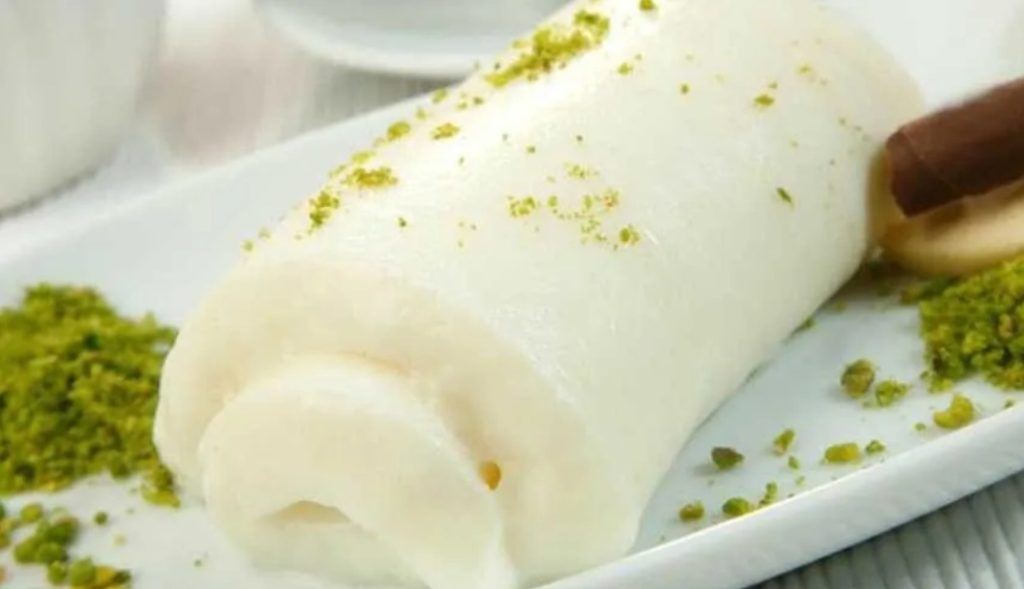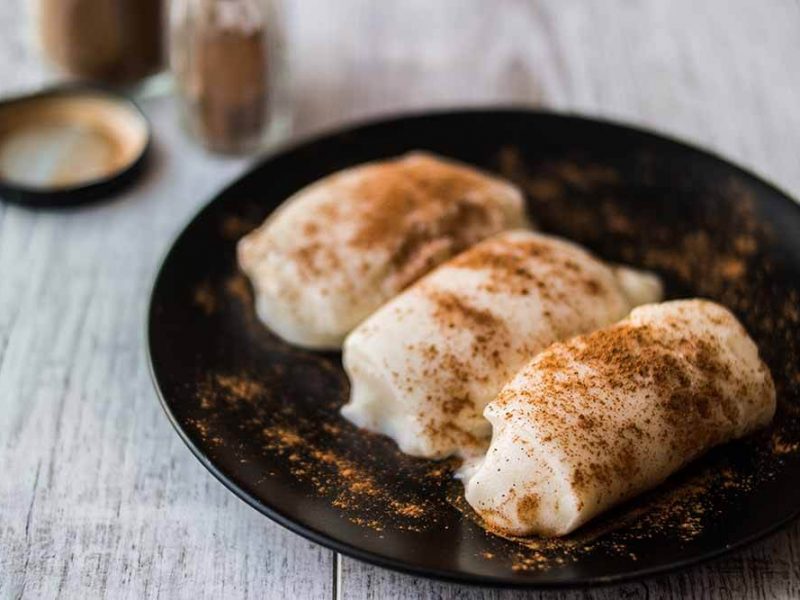“Meat in a dessert?” Yes, tavukgöğsü!
The answer to this question comes from the famous gourmet of ancient Rome, Marcus Gavius Apicius. In his cookbook, known in short as De re Coquinaria and in full as De Opsoniis et Condimentis sive de re Culinaria Libri Decem, attributed to Apicius who is believed to have lived in the 1st century BC, it is written:
“The breast meat of a freshly slaughtered chicken is shredded and cooked by adding it to boiling milk.”
According to the article by Gökhan Turhan from Dünya, the chicken breast, which is pounded with a mallet until very fine, is then sweetened with honey and thickened with ground almonds. In other words, it is a recipe for the dessert we call “tavukgöğsü” in Turkish. Although we like to think of this unique dessert as belonging to Turkish cuisine, that’s not quite the full story.
Its 2,000-year-old journey actually begins in Rome. We don’t know exactly how it made its way to Anatolia. However, renowned Greek chef Stelios Parliaros, who was born in Istanbul, confirms in his book Sweets of the World (Tou Kosmou Ta Glika) that the dessert originated on the Italian peninsula.

Tavukgöğsü dessert
Disappeared After the Renaissance
The dessert, which also appeared in the cuisines of Andalusia and North Africa for a time, was once called Me’muniyye, named after the son of Abbasid Caliph Al-Ma’mun, and it is believed to have reached Anatolia under this name. Another theory suggests that the dessert was brought to the Middle East during the Crusades.
A Renaissance-era Italian chef named Martino also mentions a Catalan dessert similar to tavukgöğsü in his 1465 book Libro de Arte Coquinaria (The Art of Cooking), called Blancmange (White Dish). The only difference in that recipe was the use of rooster meat instead of chicken. However, by the end of the Renaissance -in the late 16th century- historical sources indicate that blancmange fell out of use in Europe.
Tavukgöğsü In the Ottoman Palace with Mehmed the Conqueror
Now let’s turn to the Ottoman version of tavukgöğsü. The first figure we encounter is Sultan Mehmed II (Mehmed the Conqueror), known for his love of desserts. Kitchen records from Topkapı Palace show that palace chefs prepared milk pudding with chicken for the Sultan.
Another detail appears in the records of the circumcision festivities of Suleiman the Magnificent’s sons, Princes Bayezid and Cihangir, where tavukgöğsü was included on the menu.
Even Friedrich Unger, the German head confectioner of King Otto of Greece, who visited Istanbul in 1835, mentioned the tavukgöğsü dessert in his notes.
A more “developed” version of tavukgöğsü is actually its slightly burnt variation. According to legends, kazandibi, a sweeter version of tavukgöğsü, was created specifically for customers who preferred a slightly burnt flavor in their dessert.
Today, neither blancmange in Rome nor me’muniyye in the Arab world have left much trace. But Anatolia embraced this unusual recipe, adopted it, and turned it into a treasured part of its culinary tradition.

